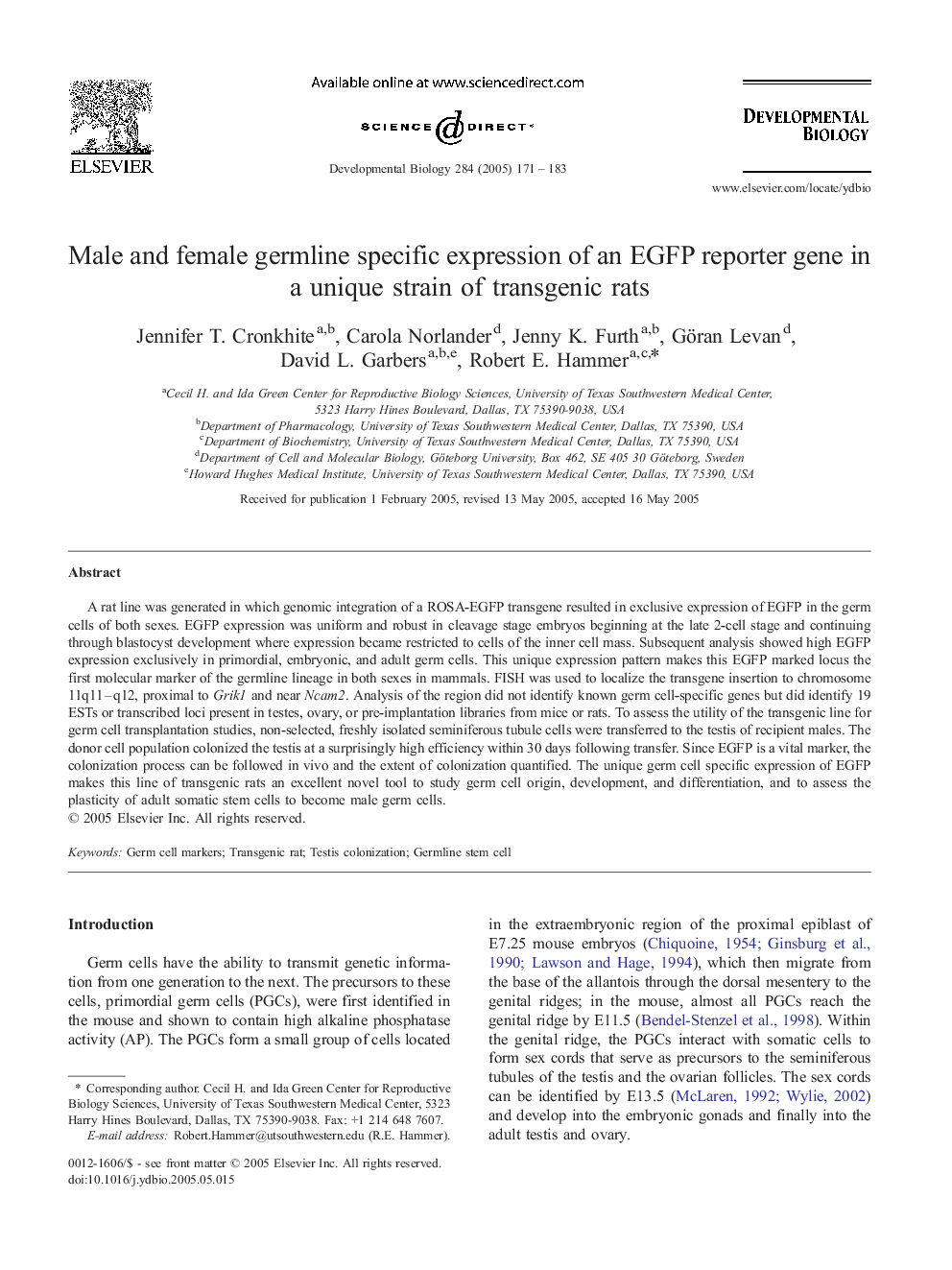| Article ID | Journal | Published Year | Pages | File Type |
|---|---|---|---|---|
| 10934203 | Developmental Biology | 2005 | 13 Pages |
Abstract
A rat line was generated in which genomic integration of a ROSA-EGFP transgene resulted in exclusive expression of EGFP in the germ cells of both sexes. EGFP expression was uniform and robust in cleavage stage embryos beginning at the late 2-cell stage and continuing through blastocyst development where expression became restricted to cells of the inner cell mass. Subsequent analysis showed high EGFP expression exclusively in primordial, embryonic, and adult germ cells. This unique expression pattern makes this EGFP marked locus the first molecular marker of the germline lineage in both sexes in mammals. FISH was used to localize the transgene insertion to chromosome 11q11-q12, proximal to Grik1 and near Ncam2. Analysis of the region did not identify known germ cell-specific genes but did identify 19 ESTs or transcribed loci present in testes, ovary, or pre-implantation libraries from mice or rats. To assess the utility of the transgenic line for germ cell transplantation studies, non-selected, freshly isolated seminiferous tubule cells were transferred to the testis of recipient males. The donor cell population colonized the testis at a surprisingly high efficiency within 30 days following transfer. Since EGFP is a vital marker, the colonization process can be followed in vivo and the extent of colonization quantified. The unique germ cell specific expression of EGFP makes this line of transgenic rats an excellent novel tool to study germ cell origin, development, and differentiation, and to assess the plasticity of adult somatic stem cells to become male germ cells.
Keywords
Related Topics
Life Sciences
Biochemistry, Genetics and Molecular Biology
Cell Biology
Authors
Jennifer T. Cronkhite, Carola Norlander, Jenny K. Furth, Göran Levan, David L. Garbers, Robert E. Hammer,
